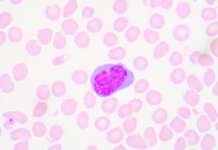By Jerri-Lynn Scofield, who has worked as a securities lawyer and a derivatives trader. She is currently writing a book about textile artisans.
I didn’t intend to write about contact tracing again so soon, but this front-page NYT piece, Contact Tracing Is Failing in Many States. Here’s Why.- contained a screaming omission that just happened to be based on the same fallacy as an email claim I received today from a friend – proved too tempting a target. And incidentally, is a big, obvious part of the reason why the United States, despite its wealth and power, has the worst COVID-19 numbers in the world.
This short post will cover three points: first off, what the Grey Lady gets right, including how it seems to have successfully resisted Big Tech’s ongoing campaign to get people to conflate contact tracing and contact tracing by app.And then finally, the elephant in the room: how its crappy for-profit health care system hamstrings its contact tracing efforts.
What is Needed for Successful Contact Tracing
So, what the NYT gets right: That contact tracing is a successful part of public health policy, and one of the reasons other parts of the world have the pandemic under control:
Contact tracing, a cornerstone of the public health arsenal to tamp down the coronavirus across the world, has largely failed in the United States; the virus’s pervasiveness and major lags in testing have rendered the system almost pointless. In some regions, large swaths of the population have refused to participate or cannot even be located, further hampering health care workers.
“We are not doing it to the level or extent that it should be done,” said Steve Adler, the mayor of Austin, echoing the view of many state and city leaders. “There are three main reasons. One is the sheer number of people, the second is the delay in getting test results back, the third is the wide community spread of the disease.”
The US lacks infrastructure to do this properly, as well as well-trained tracers:
Crystal Watson, a risk-assessment specialist at the Center for Health Security at the Johns Hopkins Bloomberg School of Public Health, said she had hoped more contact tracers would be trained and in place before states started reopening. For now, she expects it to be feasible only in Massachusetts, New York, North Dakota and the District of Columbia. Massachusetts, where the nonprofit group Partners in Health leads the efforts, has done particularly well.
Slow testing rates impede success:
Perhaps most harmful to the effort have been the persistent delays in getting the results of diagnostic tests. Often by the time an individual tests positive, it’s too late for the health care workers tracking that person to do anything.
“It’s a race against time,” Ms. Phillips said. “And if we have lost days and days of infectious period because we didn’t get a lab result back, that really diminishes our ability to do contact tracing.” In Maryland, like many states, some labs are taking as long as nine days to turn around results. “We are getting some assurances from national manufacturers this lag is short term,” she said. “I am not confident.”
In contrast, when sports teams and staff of the White House test people constantly, with fast turnarounds, contact tracing is instant and effective.
Public lack of trust in government doesn’t help matters either:
Even as health care workers leap over these hurdles, they are also finding that it can be difficult not just to reach people who were potentially exposed to the virus but to get them to cooperate. Sometimes there is no good phone number, and in the cellphone era, unrecognized numbers are often ignored; 25 percent of those called in Maryland don’t pick up. Others, suspicious of contact tracers or fueled by misinformation about them, decline to cooperate, a stark contrast with places like Germany where compliance with contact tracers is viewed as a civic duty.
NYT Doesn’t Conflate Contact Tracing and Contact Tracing By App
And, quelle surprise, maybe the tide is turning on elite acceptance of the claims of big Tech. Because the NYT here doesn’t fall for Big Tech’s propaganda and doesn’t conflate contact tracing and contact tracing by app, a claim I discussed most recently in COVID-19 Mistakes to Avoid: Don’t Conflate Contact Tracing with Contact Tracing By App and No, We Don’t Need to Place Our Faith in Downloading Some Untested, Privacy-Infringing App as the Only Possible COVID-19 Slayer; Why Don’t We Look to Places that Have Successfully Limited Disease Spread and Copy Their Policies?
The NYT merely brushed up against the topic and didn’t even mention it directly and certainly didn’t succumb to rah, rah; sis boom bah, a killer corner app will solve all! propaganda:
And there is little appetite in the United States for intrusive technology, such as electronic bracelets or obligatory phone GPS signals, that has worked well for contact tracing in parts of Asia. Although Americans are free to cross state lines, no national tracing program exists.
Support in Isolation or Self-Quarantine
And the NYT even recognized the importance of providing support and assistance to people in isolation or self-quarantine:
Every tracer must be paid, not a volunteer. And Massachusetts had to put in enough money to let the tracers “support” anyone expected to self-quarantine.
“We ask: Do you need food? Infant formula? Diapers? Cab fare? Unemployment insurance? And we help them get it,” Dr. Mukherjee said. “That way people feel it’s care, not surveillance.”
This is a big part of the successful strategy of Medellin, Columbia – a story that reader Nelson brought to my attention in the No, We Don’t Need to Place Our Faith in Downloading Some Untested, Privacy-Infringing App as the Only Possible COVID-19 Slayer; Why Don’t We Look to Places that Have Successfully Limited Disease Spread and Copy Their Policies? post cited above, and to which I added this comment:
I think it’s important to understand that the contact tracing aspect of the app is only one element of the city’s overall policy. From the source you cite [e.g., the WaPo]:
Quintero [the city’s mayor] said he knew that in order for many residents to quarantine, they’d need food and cash. Using his tech background, he led the city in launching Medellin Me Cuida (Medellin Takes Care of Me), an app offering aid to those who signed up and requested help.
The response has been enormous: 1.3 million families – some 3.25 million people in total – from Medellin and surrounding areas registered.
The aid was key for Maritza Alvarez, who lives with six elderly relatives, two of whom are street vendors. Since signing up, she said they’ve gotten packages of food three times and two cash transfers. That has allowed them to mostly stay indoors instead of going out to earn money and buy food.
As the WaPo article makes clear, the app told city officials which residents requested aid, and then cash and food deliveries let these people stay home. They weren’t necessarily tested and may never have contracted the disease. The aid is crucial, not that people request it via an app.
What About Health Care?
But while the NYT piece acknowledged the importance of providing food and other forms of economic assistance, it doesn’t really discuss extensively how our terrible health care system impeded contact tracing, just as it fails to prevent the spread of COVID-19. Some people worried about paying for their health care don’t get tested – because they fear paying for the consequences of a positive test. The point is instead buried here and cries out to be unpacked:
“We have to start by supporting people in getting tested, which means making it easy enough for those exposed to someone or has symptoms to just show up and not worry about a doctor’s order,” Ms. Cannuscio said. “People in the Covid era have a hard time telling you what day it is.”
As it happens, this was also the fallacy inherent in the email of an old friend – perhaps my oldest, from university – who is so far to the right, if the earth were flat, I think he might fall off. He’s a wee bit older, but not that much – and one of the only people who I still allow to condescend.I suppose because of and the differences in age and relative maturity when we first met. And because as I think Christopher Hitchens once said, you can’t make old friends. So I cut him some slack. And suppress my giggles when he tells me just how far Left Trump’s predecessor was.
We have fierce discussions about public policy – and agree on very little. I know when I can successfully rebut his claims – and he’s silent as to mine – that my position is as close to bulletproof as I can make it. Reexamining one’s assumptions is always a useful exercise.
Today found him lecturing me via an email message about Hong Kong – which readers will know, is a bit rich, as I’ve now written extensively and often on its comparative performance on managing COVID-19 (at lthe very east a half dozen times). After airily telling me Hong Kong’s COVID-19 numbers have recently spiked in a Yes Virginia there is a Santa Claus tone- well, yes, to 3273, against 27 deaths, for a densely-populated city of 7.5 million, just under the size of New York City, my friend dismissed my claim that a good health care system had anything to do with Hong Kong’s still exemplary COVID-19 management. The quality of health care speaks to treatment, not detection of and control of incidences of infection, my friend informed me. So, the claim as I understand it is that anybody’s infection numbers can’t be based on healthcare, which happens after you get the virus.
Well, not exactly. A population not concerned about paying for its health care, or falling sick, does not hide under the mattress, but is willing to get tested, and have its contacts traced, and follow public health recommendations, such as wearing a mask.
‘Tis a pity that in an article on contact tracing, the NYT still doesn’t grasp this. Nor does my super-intelligent rightwing friend, along with so many other Americans.


















